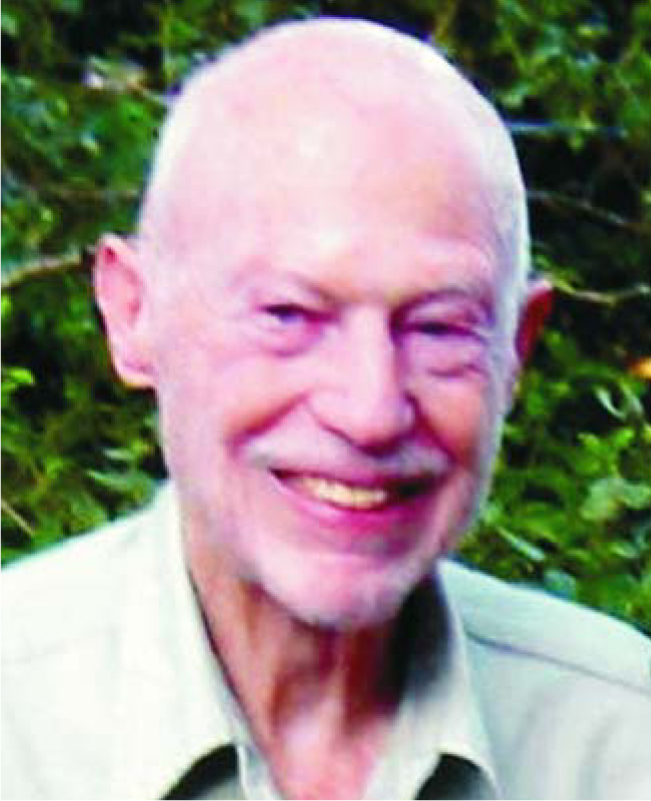Bryce Seligman DeWitt
DOI: 10.1063/1.1897570
Bryce Seligman DeWitt, professor emeritus in the physics department of the University of Texas at Austin, died on 23 September 2004 after a courageous yearlong fight against cancer.
Bryce was born on 8 January 1923 in Dinuba, California, as the eldest of four boys. An exceptionally bright student, he was admitted to Harvard University at age 16. On graduating in 1943 with an SB in physics, he enlisted in the US Navy as a naval aviator, but the war ended before he was eligible to be sent on a mission. He returned to Harvard in 1946 as a PhD student under Julian Schwinger. Bryce received his doctorate in 1950 for his dissertation entitled “Quantization of the Gravitational Field.”
He began postdoctoral work at the Institute for Advanced Study in Princeton, New Jersey. By a happy stroke of good fortune, Cecile Morette, a French mathematical physicist, joined the institute at the same time, and she and Bryce fell in love and were soon married. They also became lifelong intellectual sparring partners, with Cecile’s love of French-style mathematical formalism contrasting vigorously with Bryce’s more pragmatic American approach to the use of mathematics in physics.
Throughout Bryce’s career, the focus of his research was the challenge of quantizing the gravitational field. In 1956, through the efforts of John Wheeler, he became the director of the Institute of Field Physics at the University of North Carolina at Chapel Hill. By studying the radiation of a gravitationally accelerated charge—a problem that he solved brilliantly—he discovered the basic properties of Green’s functions in curved spacetime and became an enthusiastic advocate of their use in Rudolph Peierls’s definition of the Poisson bracket. Bryce subsequently started on his major quest: to find a unification of quantum theory and general relativity that would respect the spacetime symmetries of general relativity. He tackled that challenge from a variety of perspectives. For example, using the Hamiltonian (“canonical”) approach, he arrived at what came to be known as the Wheeler–DeWitt equation, the quantum gravity analog of the Schrödinger equation. The Wheeler–DeWitt equation was used frequently in subsequent quantum cosmology studies.
In 1961, Richard Feynman showed how to conserve probabilistic quantum predictions while respecting general-relativistic covariance, a breakthrough in the non-Hamiltonian (“manifestly covariant”) approach. But Feynman’s results applied only to the lowest order of semiclassical theory. By 1964, Bryce had extended this work to the next order. Many of his preliminary ideas had been presented a year earlier in his famous Les Houches lecture course “Dynamical Theory of Groups and Fields.” His book of the same title (Gordon and Breach, 1965) inspired a generation of theoretical physicists. The key new ideas came to be known as the Schwinger–DeWitt technique. The solution of the problem to all orders appeared in Bryce’s fundamental Physical Review papers of 1967, a trilogy that remains one of the great tours de force of theoretical physics research.
Bryce was involved with many other areas of research. He actively promoted Hugh Everett’s ideas on quantum theory and became the foremost champion of the many-universes interpretation. He also contributed to research in classical general relativity, always placing particular emphasis on the underlying physical meaning of Albert Einstein’s edifice. Bryce was one of the pioneers in studies of the Hawking effect and in the use of computers to model the colliding black hole problem. In the mid-1980s, Cambridge University Press published his book Supermanifolds, which brought together in the first systematic way many topics of importance in the study of supersymmetry. His last book, The Global Approach to Quantum Field Theory (Oxford U. Press), a massive 1042 pages, was published in 2003 when he was 80 years old.
As a scientist, Bryce was bold and extraordinarily clear thinking. He eschewed bandwagons and the common trend of trying to maximize one’s publication list: Most of his papers are long masterpieces of thought and exposition. Indeed, Bryce had a rare, perfect combination of physical and mathematical intuition and raw intellectual power that was very rarely surpassed.
Bryce was named the recipient of the American Physical Society’s Einstein Prize for 2005. He received the Pomeranchuk Prize of the Institute of Theoretical and Experimental Physics (Moscow) in 2002; the Marcel Grossmann Award, with Cecile, in 2000; and the Dirac Medal of the Abdus Salam International Centre for Theoretical Physics in 1987. Yet, notwithstanding those and many other accolades for his work, he was arguably one of the most underappreciated scientific leaders of the late 20th century. Surely, his works will continue to live after him and to inform research for generations to come.
Bryce was an indefatigable trekker and mountain climber, and traveled widely. He was unfailingly generous, kind, and courageous, a person of the utmost integrity and honesty in all he did. He had a certain natural reserve, and those who did get close to him valued his friendship enormously.

Bryce Seligman DeWitt

More about the Authors
David Deutsch. 1 Oxford University, Oxford, UK .
Christopher Isham. 2 Imperial College, London.
Gregory Vilkovisky. 3 Lebedev Physical Institute, Moscow.
